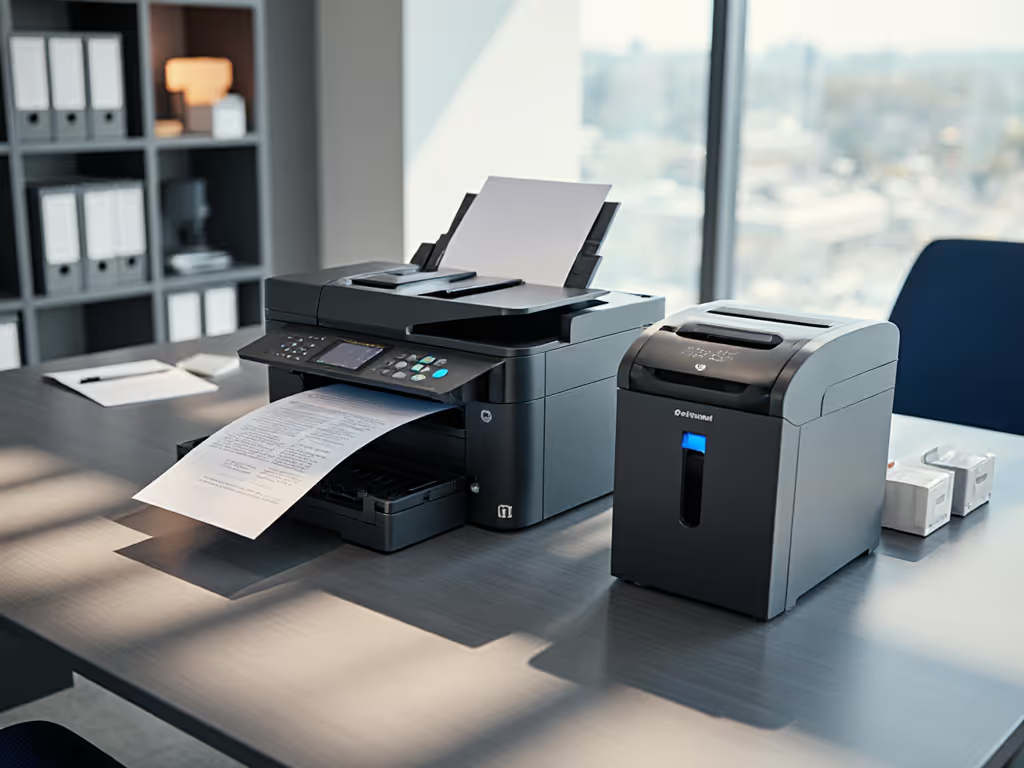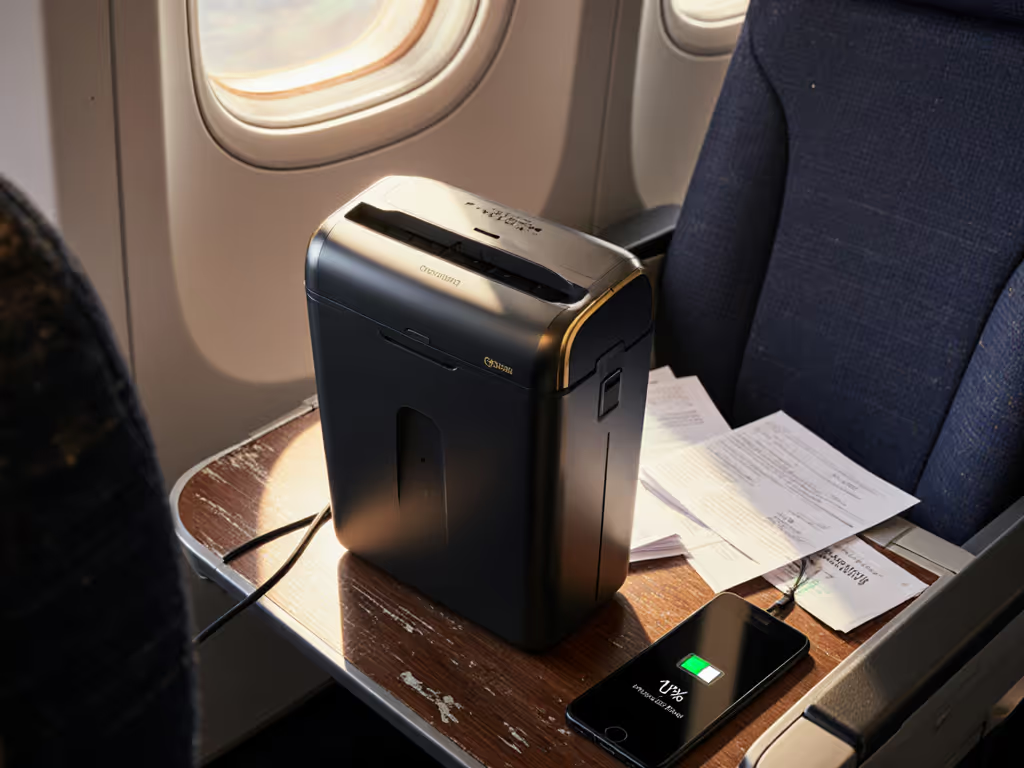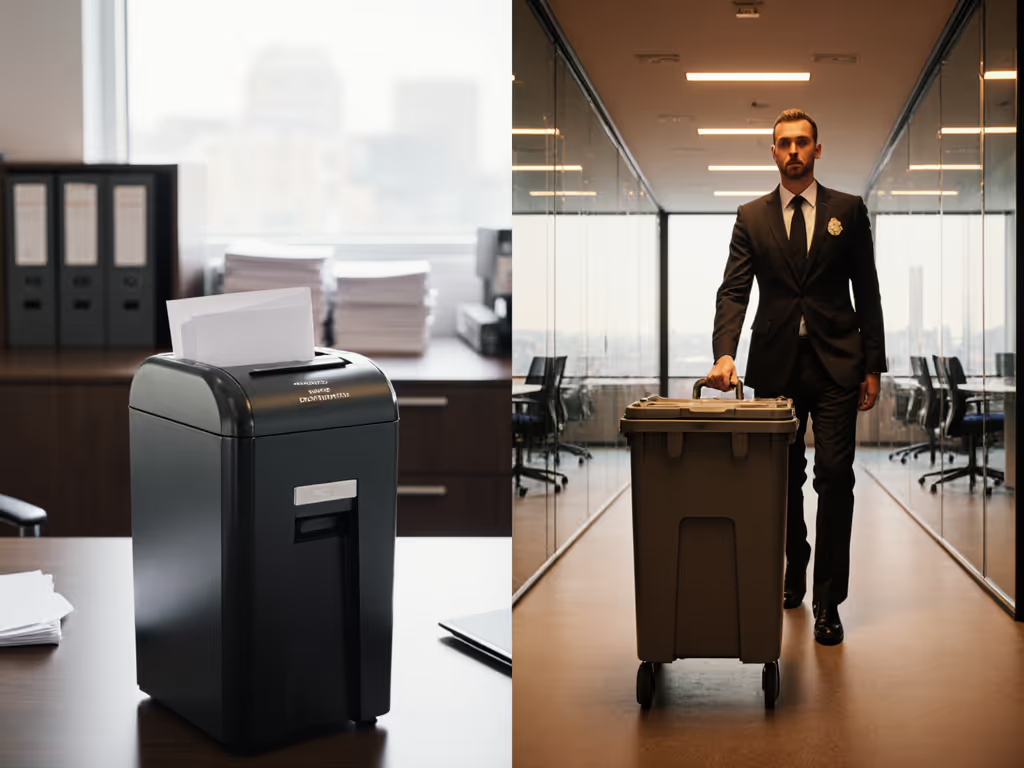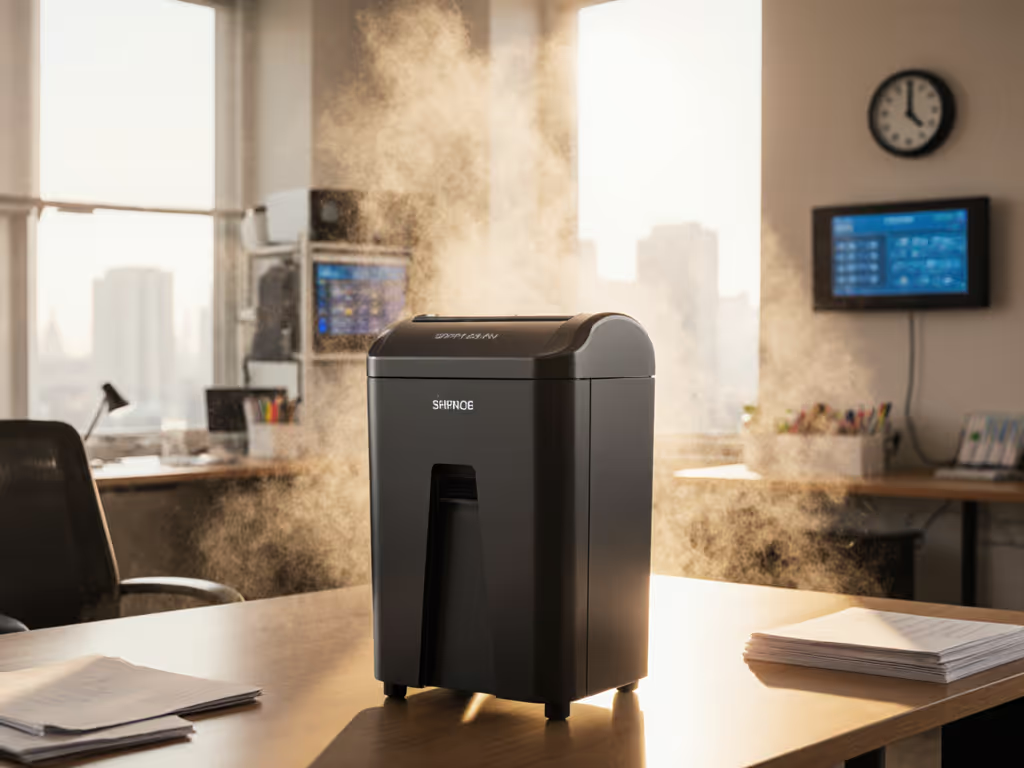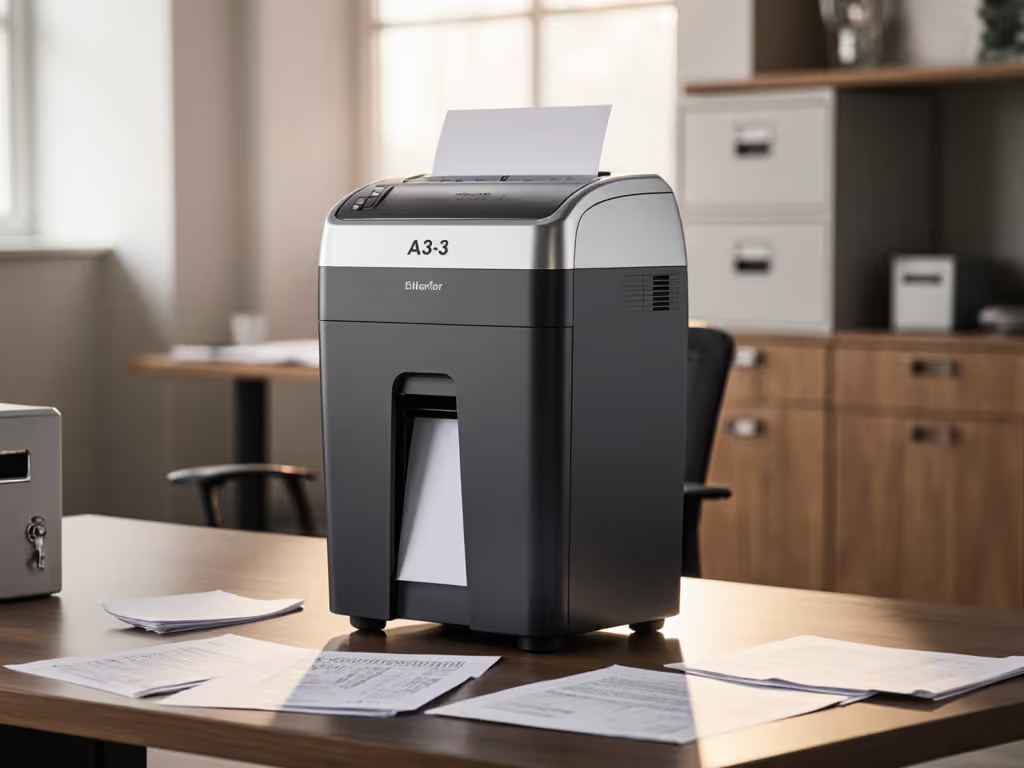
Shredder Warranty Coverage: Real Terms Compared
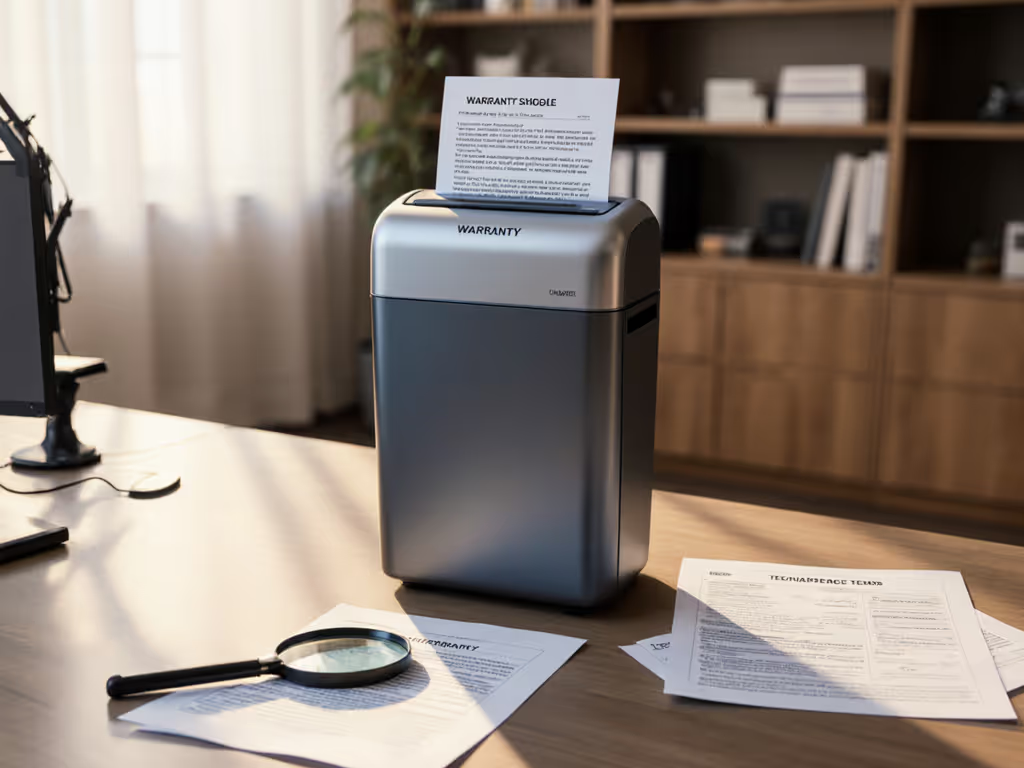
When you're evaluating a new shredder, the warranty terms often get buried under sheet capacity claims and noise specs. But here's the truth: shredder warranty comparison reveals whether you're buying a tool that lasts or just a high-maintenance liability. Let me cut through the marketing fluff with hard data on shredder service coverage (because a machine that fails during peak tax season isn't just inconvenient, it creates a dangerous disposal gap). In my years running compliance for regulated clinics, I've seen too many teams assume "5-year warranty" means peace of mind, only to discover it covers only the cutters when the motor fails. Good security practice is boring by design: consistent operation, right-sized protection, and ironclad proof it works. Match the document risk to the shred, not the hype.
Why Shredder Warranties Are Your Hidden Compliance Safeguard
Most buyers focus on DIN cut levels (P-4 for most office documents, P-5 for financial records) but ignore the warranty's real-world implications. If your machine overheats during quarterly financial shredding because the duty cycle is unrealistic, you've just created an unsecured pile of sensitive data. Warranty terms directly impact your chain-of-custody integrity. During a clinic records audit, our shred policy was the only item the auditor didn't question. Why? Because we had mapped DIN levels to document sensitivity and paired them with machines carrying warranties matching our actual volume.
The Critical Cutter vs. Whole-Unit Divide
Never assume "5-year warranty" means 5 years of full coverage. Always ask: "5 years on what?"
This is where most consumers get tripped up. Shredder warranties typically split coverage into:
- Cutting cylinders: Longest coverage (often 3-5 years)
- Motor/electronics: Shorter period (usually 1-2 years)
- Plastic housings/wheels: Often excluded or 90-day limited
Real-world example: The Fellowes 14C10 offers a 5-year cutter warranty but only 1-year coverage for the entire unit. This matters because cutters rarely fail first, while overheating motors or jam-prone gears do. If you shred 500+ sheets weekly (common for accounting firms), the motor will work harder than a home user shredding 50 sheets monthly. A warranty that covers cutters for 5 years but the motor for 1 leaves you exposed when the critical component fails.
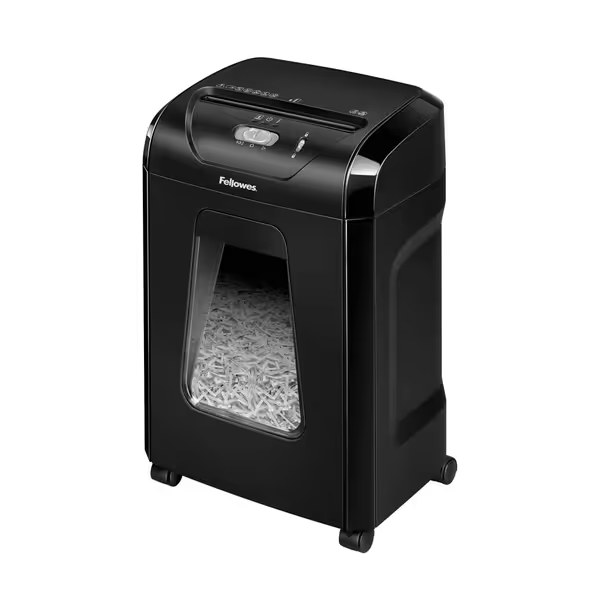
Fellowes 14C10 Home Office Paper Shredder
Repair Costs vs. Replacement: The $150 Threshold
Industry reports confirm that 68% of out-of-warranty shredder repairs cost $80-$150. When a repair exceeds 50% of the replacement cost, it is rarely economical. Consider:
| Component | Typical Repair Cost | % of New Unit Cost (Mid-Range Shredder) |
|---|---|---|
| Motor | $110-$150 | 65-85% |
| Gear Assembly | $90-$130 | 50-75% |
| Electronics Board | $75-$110 | 45-65% |
If your warranty only covers cutters (which cost $25-$40 to replace), you're unprotected against the expensive failures. Warranty terms analysis shows higher-end models like the Aurora AU1000MA ($165) justify their price through 5-year cutter and motor coverage (critical for offices shredding 10+ sheets continuously). For a deeper look at long-term value, service support, and coverage differences, see our premium shredder warranty analysis.
Duty Cycle Limits: The Silent Warranty Voider
Your warranty is void if you exceed the manufacturer's duty cycle, even with proper maintenance. This is where "long-term shredder reliability" claims crash into reality. Duty cycles specify:
- Max continuous runtime (e.g., 10 minutes)
- Required cooldown (e.g., 40 minutes)
The trap: Many warranties exclude "excessive use" or "commercial environments." If you run a small law office shredding client files for 15 minutes straight (exceeding a 10-minute limit), the subsequent motor burnout won't be covered. Here's how leading models perform:
| Model | Duty Cycle | Warranty Coverage Trigger | Real-World Risk |
|---|---|---|---|
| Fellowes 14C10 | 10 min on / ? | Voided if run >10 min continuously | Moderate |
| VidaTeco OS-1605MF N | 60 min on / 60 min off | Covered within spec | Low |
| Aurora AU1000MA | 12 min on / 40 min off | Voided if cooldown skipped | High |
The VidaTeco's 60-minute runtime with matching warranty coverage makes it ideal for document-heavy small offices. But note: its warranty explicitly excludes "commercial use," creating ambiguity for home-based attorneys processing 20 client files daily. Always document your actual usage against specs for chain-of-custody proof.
Spotting Warranty Red Flags: 4 Questions to Ask
Don't trust glossy brochures. During a records cleanup for a healthcare startup, I saw a "lifetime warranty" shredded to confetti when fine print revealed it only covered defective materials, not normal wear. Ask these before buying:
-
"What specifically voids coverage?" Watch for: "Frequent jamming," "shredding non-paper items," or "exceeding duty cycle." Many warranties exclude credit card or staple shredding, which is critical for HIPAA compliance where you must destroy entire patient records.
-
"Is proof of maintenance required?" If the warranty demands oiling logs every 3 months, but you shred infrequently, you're at risk. Pro tip: Use a plain-language audit note like "Oiled Feb 3, 2025 - 150 sheets shredded" in your compliance folder.
-
"Are labor costs included?" Some cover parts but not diagnostics ($50-$75 per hour). For home shredders, this often makes repairs pointless.
-
"Does 'commercial use' exclude home offices?" Many brands define commercial use as more than 5 employees, but if you're a sole practitioner processing 100+ patient records weekly, you need business-grade coverage.
Home vs. Office Warranty Strategies: Right-Sizing Your Coverage
Your environment dictates warranty needs. Home shredders handling 50 sheets per week need less intensive coverage, but still require clear terms. That apartment-dweller shredding credit statements needs proof their quiet machine (under 58 dB) won't overheat during 10-minute sessions. Meanwhile, a 10-person accounting firm must treat warranty specs as part of their compliance toolkit.
For home users: Prioritize 2-year whole-unit warranties. You'll avoid repair costs that exceed the shredder's value. Models like the Fellowes 14C10 (1-year unit/5-year cutter) work if you accept cutter-only coverage after Year 1. Just track sheet counts to stay within duty cycles.
For small offices: Demand documentation matching your risk category mapping. If you handle P-4 documents (most financial records), your warranty must cover continuous runtime matching quarterly processing spikes. The VidaTeco OS-1605MF N's 60-minute runtime with US-patented jam-proofing delivers long-term shredder reliability when your compliance depends on uninterrupted operation.
Chain-of-custody reminder: Keep purchase receipts and usage logs. If auditors ask why you shredded 2,000 sheets in one session (exceeding duty cycle), proof of emergency volume justifies the risk.
The Bottom Line: Security Without Theater
Warranties aren't an afterthought, they are operational armor. I've watched teams panic when a $200 shredder dies mid-season, forcing risky disposal workarounds. Your goal isn't maximum security theater; it is consistent, documented destruction that survives an audit. Shredder repair costs become irrelevant when coverage aligns with actual use. Focus on:
- Cutter + motor coverage duration (not just cutters)
- Duty cycle limits matching your peak volume
- Exclusions for materials you must shred (staples, credit cards)
When you've matched document risk to the shred, and warranty terms to your workflow, you'll have that quiet confidence I saw in the clinic audit room. No drama. Just proof it works.
Explore further: Calculate your actual monthly sheet count. If it exceeds 500 sheets, demand business-grade warranties. For most home offices, 2-year whole-unit coverage with P-4 security (like the Fellowes 14C10) strikes the right balance. Need help mapping your documents to DIN levels? I'll share my risk-category cheat sheet in the next article.
Related Articles

